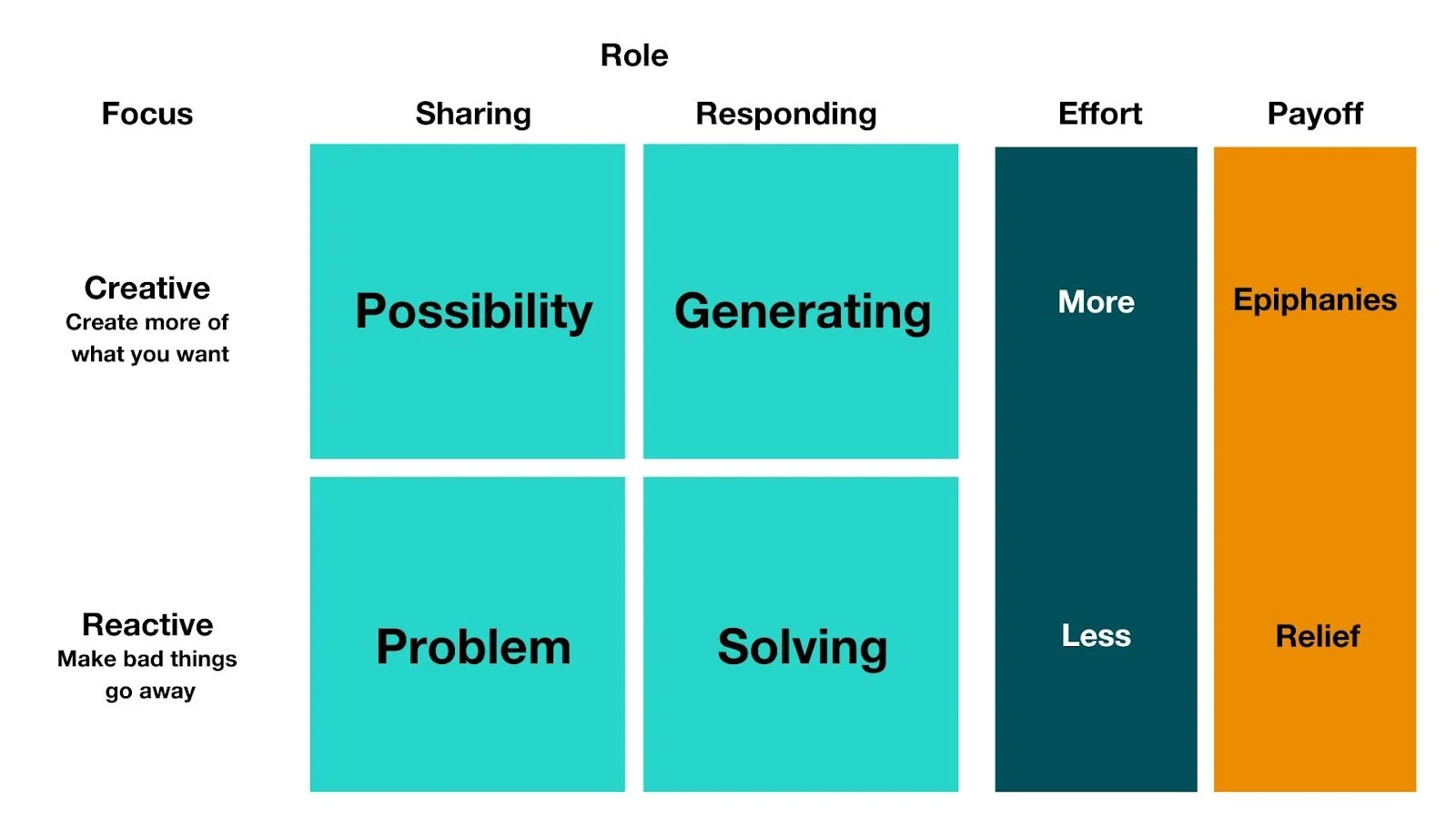From Problem Solving to Possibility Thinking
Imagine this scenario. You take on a new leadership role. Here’s your brief: there are no problems to solve in this role. You’re not there to fix anything.
How would you handle that?
How would you know if you’re doing a good job?
Do those jobs even exist?
A client shared this exact scenario with me recently. For years, she’s been a successful people leader who has a reputation for being a brilliant problem solver. Throw her a gnarly issue, and she’ll get her team onto it.
Then she suddenly found herself promoted into a leadership role where her job didn’t have any direct reports. Her role description was all about building relationships and influencing others. No problems to solve. No fixing needed.
How did she respond? She got the wobbles big time.
Her response reflects a belief that’s prevalent in many leaders’ minds: as a leader, I add the most value when I’m fixing problems.
If I’m not solving problems, then how do I add any value?
Problem solving is seductive, right? We can tick off all the problems we solved today. We feel a sense of accomplishment. I’m showing my worth.
Here’s why that’s a limiting belief: all fixing problems does is ‘make bad things go away’. Nothing new emerges. We deal with an issue in order to get ‘back to normal’. It's an adrenaline loop that’s fun and can give us plenty of dopamine hits. Yet in effect, it takes us nowhere. Rats on a wheel come to mind.
When we play that game, we’re missing the bigger point. If leadership is about creating the conditions for people to create a better future, then we need to go beyond simply solving problems. We need to throw a better party. One that’s all about the vision of the future we want to create. One that enables us to transform how we do things so we can realise that vision. One that shines a light on the potential that exists right here and now. One that invites and enables people to activate that potential.
Michelangelo saw his job was to remove all the stone in the block of marble that didn’t need to be there. Without a vision of what he wanted to create (e.g. the statue of David) how would he have gone about sculpting the statue?
Don’t get me wrong. Problems will always exist. Yet if that’s all we’re focused on, we’re not really leading. A focus on the issue is never enough. It doesn’t inspire possibility! At best, we’re maintaining the status quo.
In a recent leadership workshop I asked the participants “who are you as a leader if you’re not a problem solver?” One participant, a lawyer by training, replied “You’ve really floored me there. I have no idea how to answer that. I’m trained to solve problems. That’s what I do.”
Here’s a visual way of describing the differences:
Paradoxically, if we’re to fix the big problems we face in the world today, we need to start with generating possibilities.
How can we shift from a ‘fix-this-problem’ deficit mindset to a more generative, possibility mindset?
Here are some thoughts:
Speak to what we want, not what we don’t want. Our results come from what our mind focuses on. Get a clear picture of the future you want, and why it matters.
Reward for transformation, not just problem-resolution. When we’re incentivised to find new and better ways to create the outcomes we say we truly want, we’ll be more likely to put energy into it.
Shine a light on the good stuff. Pause, celebrate, and acknowledge what you’ve achieved, and what you’re learning.
Be inspired by others. For starters, listen to Possible, a podcast by silicon valley entrepreneur Reid Hoffman, where he focuses on ‘what could be possible if everything broke humanity’s way?’
For more, check out the original article I wrote on this idea called Where’s Your Focus?


